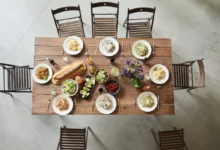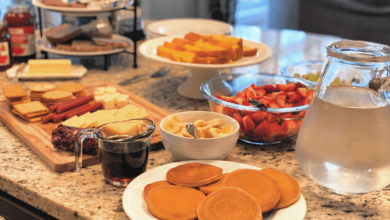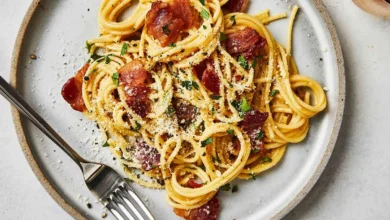The world is moving at a pace so fast that finding quality time to spend with family can be a challenge. However, there’s one activity that has the power to bring loved ones closer and create cherished memories – cooking together. Sharing the joy of preparing homemade meals not only fills the stomach but also warms the heart. To bring you closer to your loved ones, this post will explore the wonderful experience of cooking with family, the benefits it brings, and some heartwarming recipes that are perfect for strengthening those family bonds.
The Importance of Family Bonding
Techonlogy and busy schedules often dominate our lives that the concept of family bonding can sometimes feel like a fading tradition. Yet, amid the hustle and bustle of modern life, the essence of family bonding holds an undeniable significance that enriches our emotional well-being, nurtures connections, and adds a sense of purpose to our existence. While various activities can facilitate family bonding, few are as potent and rewarding as cooking together.
1. Nurturing Connections Beyond Surface Level
Family bonding transcends mere proximity. It’s about forging deeper connections that allow family members to truly understand and appreciate each other’s thoughts, feelings, and aspirations. Cooking together provides the perfect backdrop for this journey of understanding. As family members come together to prepare a meal, they engage in tasks that require collaboration, coordination, and shared effort. Through the act of chopping, stirring, and setting the table, conversations flow naturally, touching upon a wide range of topics beyond the superficial. This shared experience fosters a sense of unity and empathy as family members open up, share stories, and actively listen to one another.
2. A Journey of Tradition and Heritage
Cooking often carries with it a rich tapestry of tradition and heritage. Family recipes passed down through generations become more than just culinary instructions; they are a living testament to the history and culture of a family. When generations gather to cook these time-honored dishes, they create a bridge between the past and the present, allowing younger members to connect with their roots and older members to relive cherished memories. These moments of culinary tradition become opportunities for storytelling, where anecdotes of ancestors and family history come alive, intertwining the fabric of the past with the present.
3. Creating Lasting Memories
The act of cooking together transforms ordinary days into extraordinary memories. The kitchen becomes a playground of creativity, where family members experiment, create, and learn from one another. Children become fascinated by the culinary arts, learning valuable life skills while exploring their creativity. Parents and grandparents, in turn, feel a sense of pride and accomplishment as they pass on their knowledge and watch the younger ones flourish. These shared experiences etch themselves into our memory, carrying a warmth that can be revisited whenever we recall the taste and aroma of a meal prepared together.
4. Building a Strong Foundation
Strong families are built on a foundation of communication, trust, and shared experiences. Cooking together nurtures all of these essential elements. As family members collaborate in the kitchen, they learn to trust each other’s judgment, take responsibility for their tasks, and understand the importance of teamwork. These lessons extend beyond the kitchen, reinforcing the value of cooperation and mutual respect in all aspects of life. The sense of accomplishment that arises from successfully creating a meal as a team boosts confidence and reinforces the idea that, together, the family can overcome challenges and achieve remarkable things.
5. Fostering a Sense of Belonging
In a world that can often feel fragmented and disconnected, the sense of belonging that comes from family bonding is precious. As family members gather around the dining table to enjoy the fruits of their labor, they experience a profound sense of togetherness. The shared meal becomes a symbol of unity, representing the effort, love, and care that went into its creation. This feeling of belonging extends beyond the immediate family and radiates outwards, strengthening the bonds between extended family members and friends who are welcomed into this circle of connection.
Benefits of Cooking as a Family
Communication: Cooking requires coordination and collaboration. As family members work together on chopping, stirring, and assembling, they communicate, share stories, and bond over shared tasks.
Skill Sharing: Family members of different generations can exchange culinary skills. Grandparents can pass down traditional recipes, while younger members can introduce new techniques and trends.
Building Confidence: Cooking as a family helps boost confidence. Children feel a sense of accomplishment when they see their contributions resulting in a delicious meal.
Healthy Choices: Families making meals together can make more conscious decisions about ingredients, leading to healthier eating habits.
Stress Relief: Cooking can be therapeutic, providing a creative outlet that reduces stress. It’s an opportunity for family members to unwind and enjoy the process.
Recipes that Strengthen Bonds

1. Homemade Pizza Party: Gather your family for a homemade pizza night. Prepare individual pizza dough, set up a variety of toppings, and let each family member create their personalized pizza masterpiece. While waiting for the pizzas to bake, engage in conversations about everyone’s day or share funny anecdotes.
2. Hearty Pasta Cook-off: Host a pasta cook-off where each family member prepares a different type of pasta dish. Assign roles like sauce maker, pasta cooker, and garnish expert. This friendly competition encourages creativity and teamwork while indulging in some delicious pasta variations.
3. Baking Extravaganza: Spend a day baking an assortment of treats like cookies, cupcakes, and muffins. Baking involves precision and patience, providing ample time for family members to chat, laugh, and collaborate while waiting for the delightful aromas to fill the kitchen.
4. International Cuisine Night: Explore the flavors of the world by choosing a different country’s cuisine to prepare together each month. Research traditional recipes, gather unique ingredients, and immerse yourselves in the culture while creating a flavorful feast.
5. Weekend Breakfast Fiesta: Turn lazy weekend mornings into a special family breakfast fiesta. Prepare a spread of pancakes, waffles, scrambled eggs, and fresh fruit. It’s a relaxed setting to share stories, discuss plans, and enjoy a leisurely meal together.
Tips for a Successful Family Cooking Experience
Plan Together: Let everyone have a say in what dishes to prepare. This fosters a sense of ownership and excitement.
Divide Tasks: Assign roles based on each family member’s strengths and interests. This way, everyone feels valued and involved.
Create a Playlist: Play some background music that everyone enjoys. Music sets a fun and relaxed atmosphere in the kitchen.
Embrace Imperfections: Remember, it’s not about creating a flawless meal, but about enjoying the process and each other’s company.
Celebrate Accomplishments: Once the meal is ready, take a moment to appreciate what you’ve created together. Share compliments and enjoy the fruits of your labor.
Conclusion
Cooking with family is more than just preparing a meal – it’s a journey that strengthens relationships and creates cherished memories. The kitchen becomes a place of togetherness, where laughter, stories, and creativity blend seamlessly. Whether it’s a pizza night or an international cuisine adventure, the act of cooking together fosters communication, skill-sharing, and a sense of accomplishment. So, clear your schedules, put on your aprons, and embark on a delightful culinary bonding experience with your loved ones.



